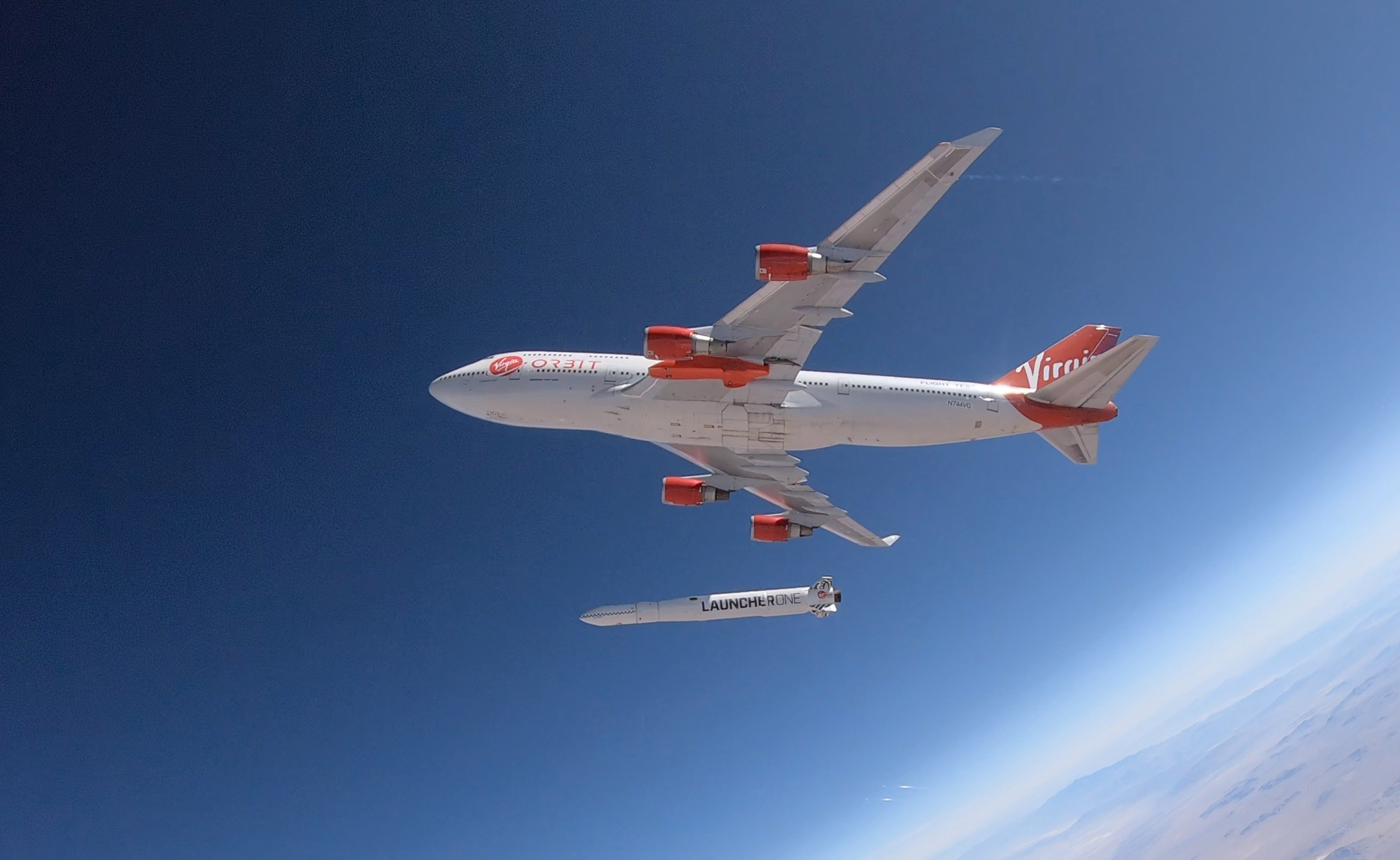
Virgin Orbit plans to launch for the very first time just a few days from now.
The company is targeting Sunday (May 24) for its Launch Demo mission, with a backup opportunity on Monday (May 25). The four-hour window will open each day at 1 p.m. EDT (1700 GMT), Virgin Orbit representatives announced today (May 20).
Launch Demo will be a huge milestone for Virgin Orbit, which has been developing its air-launch system for five years. That system involves a modified Boeing 747 jet called Cosmic Girl and a 70-foot-long (21 meters) rocket known as LauncherOne, which is capable of delivering about 1,100 lbs. (500 kilograms) to a variety of destinations in low Earth orbit.
In photos: Virgin Orbit's LauncherOne rocket for satellite missions
During operational flights, Cosmic Girl will drop LauncherOne at an altitude of about 35,000 feet (10,700 m); the rocket will then make its own way to space.
Cosmic Girl and LauncherOne have flown together on many "captive-carry" tests, and the plane even dropped the rocket (on purpose) during one jaunt last July. But Launch Demo will mark the first time that LauncherOne fires up its engine mid-flight and aims for the heavens.
There's certainly no guarantee that the rocket will make it all the way to orbit during Launch Demo, which will take off from Mojave Air and Space Port in Southern California. Failure is the norm for inaugural launches of new spaceflight systems, Virgin Orbit representatives said, stressing that data collection is Launch Demo's chief goal.
Get the Space.com Newsletter
Breaking space news, the latest updates on rocket launches, skywatching events and more!
"We'll continue the mission for as long as we can," Virgin Orbit representatives wrote today in a blog post about the test flight. "The longer LauncherOne flies, the more data we'll be able to collect. Should we defy the historical odds and become one of those exceedingly rare teams to complete a mission on first attempt, we will deploy a test payload into an orbit, take our data and then quickly de-orbit so as not to clutter the heavens."
Virgin Orbit is part of billionaire Richard Branson's Virgin Group, which also includes the space-tourism company Virgin Galactic. Virgin Galactic also employs an air-launch strategy for its six-passenger suborbital space plane, SpaceShipTwo.
A Sunday or Monday liftoff for Virgin Orbit — which has already secured a three-launch, $35 million deal with the United States Space Force — would serve as a nice lead-in to another big spaceflight milestone. On Wednesday (May 27), SpaceX plans to launch its first-ever crewed flight, a test mission called Demo-2 that will send NASA astronauts Bob Behnken and Doug Hurley to the International Space Station aboard a Crew Dragon capsule.
- Virgin Orbit's rocket-launching plane keeps taking test flights with LauncherOne
- Virgin Orbit could launch Polish cubesat mission to Mars in 2022
- Virgin Galactic gearing up to start selling suborbital spaceflight tickets again
Mike Wall is the author of "Out There" (Grand Central Publishing, 2018; illustrated by Karl Tate), a book about the search for alien life. Follow him on Twitter @michaeldwall. Follow us on Twitter @Spacedotcom or Facebook.
OFFER: Save 45% on 'All About Space' 'How it Works' and 'All About History'!
For a limited time, you can take out a digital subscription to any of our best-selling science magazines for just $2.38 per month, or 45% off the standard price for the first three months.
Join our Space Forums to keep talking space on the latest missions, night sky and more! And if you have a news tip, correction or comment, let us know at: community@space.com.

Michael Wall is a Senior Space Writer with Space.com and joined the team in 2010. He primarily covers exoplanets, spaceflight and military space, but has been known to dabble in the space art beat. His book about the search for alien life, "Out There," was published on Nov. 13, 2018. Before becoming a science writer, Michael worked as a herpetologist and wildlife biologist. He has a Ph.D. in evolutionary biology from the University of Sydney, Australia, a bachelor's degree from the University of Arizona, and a graduate certificate in science writing from the University of California, Santa Cruz. To find out what his latest project is, you can follow Michael on Twitter.










